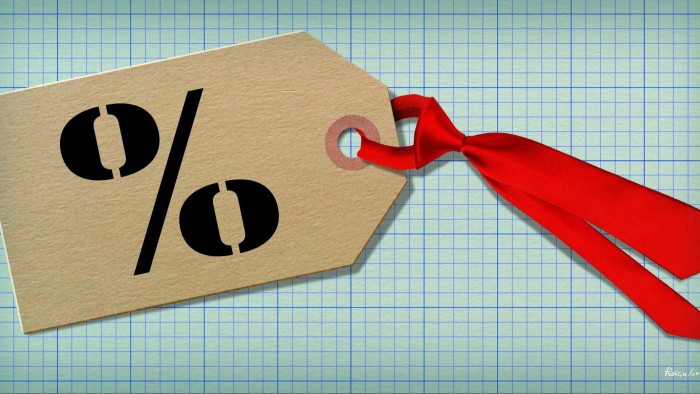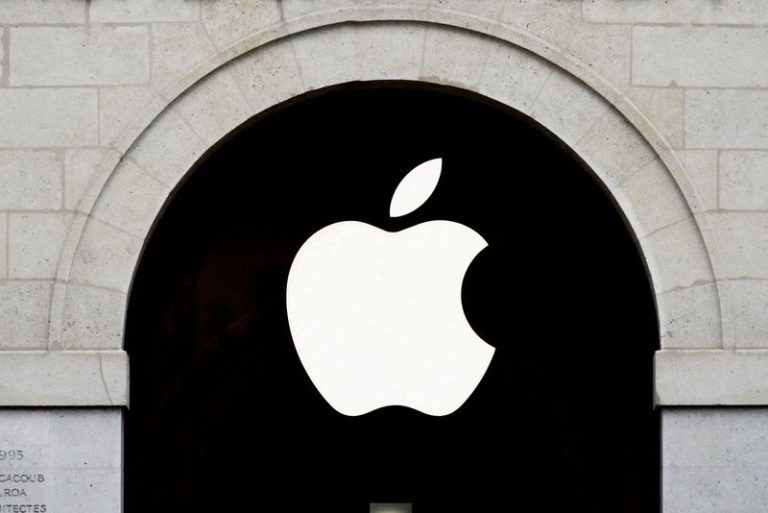Stay informed with free updates
Simply sign up to the Sovereign bonds myFT Digest — delivered directly to your inbox.
The interest rate, real and nominal, on long-term safe assets is perhaps the most important price in a capitalist economy. It tells one about confidence in governments and the economy. In recent years, these prices have normalised. The era of ultra-low interest rates that began in 2007-09, with the financial crises, seems to be over. An era of normality seemed to be returning. Hurrah! But the world does not really look very “normal”. Should we be waiting for big new shocks, instead?
The UK government has been issuing index-linked gilts since the 1980s. The history of their yields gives us three big stories of the evolution of real interest rates over four decades. The first is one of a huge secular decline. In the 1980s, redemption yields on 10-year index-linked gilts were around 4 per cent. During the pandemic and its immediate aftermath, rates fell to minus 3 per cent. The total swing then was of 7 percentage points. The second story is of how the post-financial crisis economic slump led to an extraordinarily long period of sub-zero real interest rates. The third is of a rapid rise in these yields to around 1.5 per cent, from early 2022. The lengthy period of falling real interest rates that culminated in those negative real rates now seems to be over. We are in a new and far less strange world.
Data on yields on 10-year US Treasury inflation-protected securities (Tips) give a similar picture, but this data has only been available since the early 2000s. From 2013, the two series have diverged, with generally higher yields on the US version. The difference may partly be due to pension regulation in the UK, which in effect imposed a brutal financial repression on defined benefit pension plans. Real interest rates on Tips also rose sharply from the trough reached during the pandemic, but not by as much as on index-linked gilts. As a result, these rates converged. Thus, yields on Tips have recently been about 2 per cent and those on index-linked gilts close to 1.5 per cent.
These levels are also close to where they were prior to the financial crisis. We are, in these terms, “back to normal”. But if we go back further into the past, we find that even today’s UK index-linked yields are quite low: in the 1980s the rates were more than 2 percentage points higher than they are today.

There is no crisis to be seen in these numbers. Markets in safe assets are not screaming “default is nigh”. Nor, for that matter, are they screaming “hyperinflation (even high inflation) is nigh”.
The simple way of looking at the latter is in terms of “break-even” inflation rates, which are the gaps between yields on index-linked and conventional debt of the same maturity. In the US, this spread is around 2.3 per cent, which is barely above the average of 2.1 per cent since January 2003. In the UK, it is 3.3 per cent, barely above the post-2000 average of 3 per cent. Given the inflation shock of recent years, and so the greater salience of inflation risk, the rise in this gap is tiny. Markets seem strikingly confident that inflation targets will be hit over a 10-year period.
The story of yields on conventional bonds in other high-income countries is consistent with the pattern for the US and UK and mostly better. Between January 1 2021 and May 28 2025, yields on 10-year nominal bonds rose by 4.5 percentage points to 4.7 per cent in the UK, by 3.6 percentage points to 3.2 per cent in France, by 3.6 percentage points to 4.5 per cent in the US, by 3.1 percentage points to 2.5 per cent in Germany, by 3 percentage points to 3.6 per cent in Italy and by 1.5 percentage points to 1.5 per cent in Japan. These levels are modest by pre-2008 standards. Given this, a sharp reversal would seem unlikely without another large negative shock to output. Right now, at least the ultra-low interest rate world of 2008-21 seems to be over.
Is another big shock conceivable? Yes. The extraordinarily chaotic policymaking of the Trump administration might generate a shock to animal spirits and so investment. Indeed, it is striking how rapidly Consensus Forecasts have been declining for US growth in 2025. Maybe, humiliation will induce Donald Trump to disprove what Robert Armstrong has labelled the Taco (Trump Always Chickens Out) trade. Again, overall levels of indebtedness are high by historical standards, with ratios of public sector debt to GDP in high-income countries close to 1945 levels. The US is also embarking on financial deregulation at a time of high leverage and financial risk-taking. It is also continuing with high fiscal deficits while attacking its creditors via trade and fiscal policy.
Even a normalisation of interest rates after such a long period of ultra-low rates might prove too much. One obvious point here concerns the “equity risk premium”. A way of measuring this is by the gap between the cyclically-adjusted earning yield on US equities (the inverse of the “cyclically adjusted price/earnings ratio”) and the real interest rate. The last time the gap (which indicates expected excess long-term return on equities over Tips) was as low as it is right now was in June 2007. That is hardly a comforting thought.

Not least, as Paul Krugman notes, the policy process in the contemporary US is frivolous. At some point, important people might decide that the US is no longer trustworthy. Those people could well include Americans. Then we could have a big crisis, this time with capital flying away from the US, not into it.
Given all this fragility, recessionary or inflationary shocks — or even both together — are conceivable. Yields on the most important financial instruments have normalised. But the times are abnormal, on many dimensions. Reality might prove these prices right or, alas, it might blow them up. Either way, reality or these yields must adjust.











